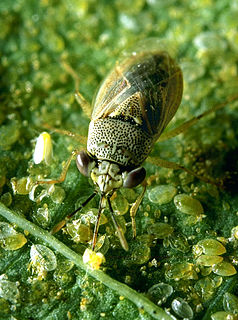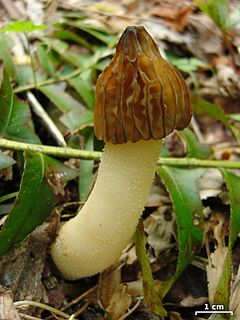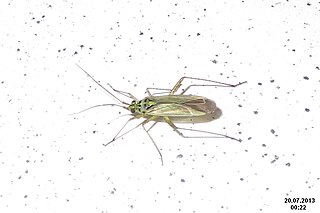
Convolvulaceae, known commonly as the bindweed or morning glory family, is a family of about 60 genera and more than 1,650 species of mostly herbaceous vines, but also trees, shrubs and herbs, and also including the sweet potato and a few other food tubers.

Geocoris is a genus of insects in the family Geocoridae. Commonly known as big-eyed bugs, the species in Geocoris are beneficial predators, but are often confused with the true chinch bug, which is a pest. There are more than 140 described species in Geocoris.

Phaenopsectra is a genus of non-biting midges in the subfamily Chironominae of the bloodworm family Chironomidae.

Entephria is a genus in the geometer moth family (Geometridae). There is no unambiguous common name for these moths; like many other members of their subfamily Larentiinae, they are sometimes called "carpets". The genus was erected by Jacob Hübner in 1825.

Entephria punctipes is a moth of the family Geometridae first described by John Curtis in 1835. It is found in the extreme north of the Palearctic and Nearctic realms.

Morchella semilibera, commonly called the half-free morel, is an edible species of fungus in the family Morchellaceae native to Europe and Asia.

Morchella populiphila is a species of morel fungus native to northwestern North America. Described as new to science in 2012, its specific epithet refers to its association with black cottonwood. The morel used to be referred to as Morchella semilibera in western North American field guides until molecular analysis established that to be a strictly European species. M. populiphila occurs in California, Nevada and Oregon. Its fruit bodies grow up to 15 cm (6 in) tall with a ridged and pitted conical cap that attaches about halfway down the stipe. The cap ridges are dark brown to black in maturity, while the pits are yellowish to brownish. The fungus is edible, although not as highly valued as other morels.

Morchella punctipes is a species of fungus in the family Morchellaceae native to North America. First described scientifically by American mycologist Charles Horton Peck in 1903, it is widely distributed east of the Rocky Mountains.

Suillus punctipes, commonly known as the spicy suillus, is a bolete fungus in the family Suillaceae.
Phidyle is a genus of South American anyphaenid sac spiders containing the single species, Phidyle punctipes. It was first described by Eugène Simon in 1880, and has only been found in Chile.
Theridion punctipes is a species of cobweb spider in the family Theridiidae. It is found in the United States and Mexico.
Phaenopsectra obediens is a species of midge in the family Chironomidae.

Oncotylus is a genus of plant bugs in the family Miridae. There are at least 20 described species in Oncotylus.
Nilobezzia is a genus of biting midges in the family Ceratopogonidae. There are more than 70 described species in Nilobezzia.
Phaenopsectra profusa is a species of midge in the family Chironomidae.
Megalopsallus is a genus of plant bugs in the family Miridae. There are at least 30 described species in Megalopsallus.

Geocoris punctipes, the big-eye bug, is a species of big-eyed bug in the family Geocoridae. It is found in the Caribbean, Central America, North America, Oceania, and South America.

Segestes is a genus of bush crickets in the subfamily Mecopodinae and tribe Sexavaini.

Achrioptera is a genus of stick insects first described in 1861. It is one of two genera in the tribe Achriopterini, the other being Glawiana. Species in the genus Achrioptera occur in Africa, including Madagascar. Although they are brightly colored, members of Achrioptera are able to effectively mimic thorny twigs and sticks for camouflage.

Dicranocephalus is the sole genus of true bugs in the family Stenocephalidae. There are about 30 described species in Dicranocephalus.













